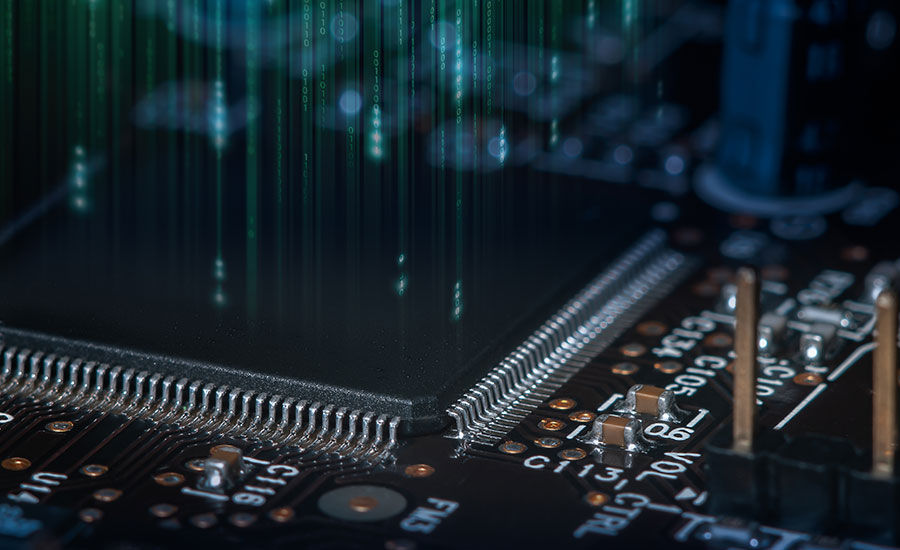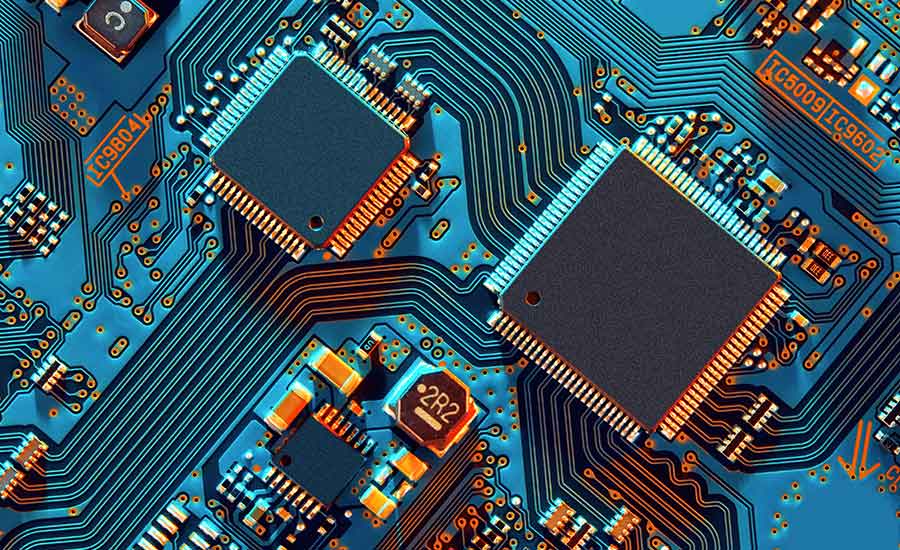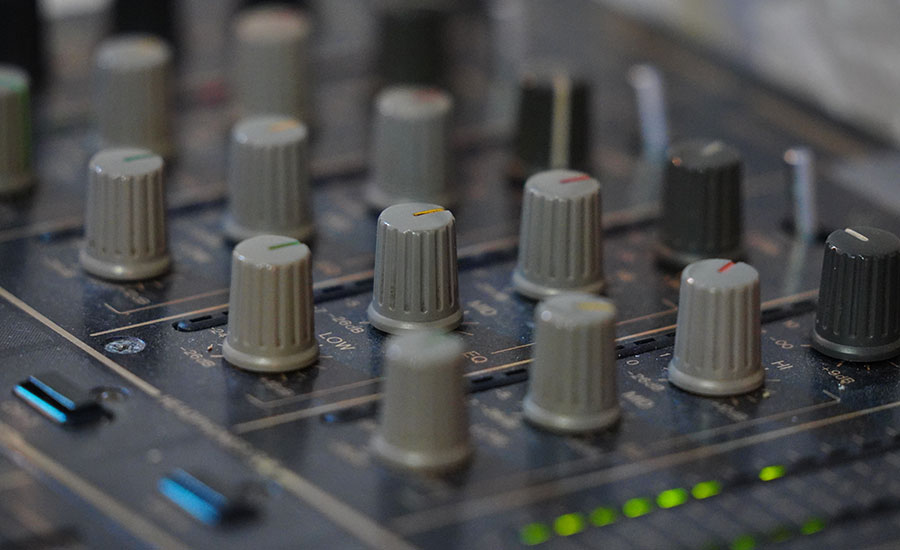
Passive components, which make up over 80% of the parts used in electronic circuits are extremely important components for the electronic component industry
These components, such as resistors, capacitors, and inductors, do not require an external power source and are fundamental to the stability and functionality of electronic systems.
On the other hand, active components like transistors, diodes, and integrated circuits (ICs) are the driving forces behind signal amplification and switching.
We’ll explore the difference between passive and active components, list the most popular ones and answer additional questions you might have.
What Is the Difference Between Passive and Active Components?
Passive components do not need external power to operate and do not amplify signals as they store or dissipate energy.
Active components require an external power source and can amplify or switch electronic signals as they control the flow of electricity.
Understanding these differences is important for designing and analyzing electronic circuits.
Passive components are primarily used for energy management, while active components are used for signal processing and amplification.
Common Types of Passive Components
Passive components are important for shaping the behavior of electronic circuits. They influence how signals are processed, filtered, and stored, providing stability and control without the need for external power.
The most common types of passive components include:
Resistors
Resistors are perhaps the most ubiquitous passive component, used to control the flow of electrical current within a circuit.
By providing a specific resistance, resistors help manage voltage levels, divide voltages, and protect other components from excessive current.
They are essential for setting operating conditions in amplifiers, filtering signals, and performing a wide range of other functions.
Capacitors
Capacitors store and release electrical energy, making them vital for filtering, buffering, and coupling applications. They consist of two conductive plates separated by an insulating material, known as a dielectric.
Capacitors are used to smooth out fluctuations in power supply outputs, filter out noise from signals, and store energy for later use. Their ability to affect both AC and DC signals makes them indispensable in a variety of electronic circuits.
Inductors
Inductors store energy in a magnetic field when current flows through them. These coil-shaped components are crucial for filtering signals, managing energy storage, and creating inductive coupling in circuits.
Inductors are commonly found in power supplies, radio frequency applications, and signal processing circuits, where they help regulate current and filter out unwanted noise.
Transformers
Transformers are used to transfer electrical energy between two or more circuits through electromagnetic induction.
They can increase (step-up) or decrease (step-down) voltage levels, making them essential in power supply systems and signal isolation.
Diodes
Diodes allow current to flow in only one direction, acting as a one-way valve. They are used for rectification, signal demodulation, and protection against reverse polarity.
Although diodes can be considered active components in some contexts due to their non-linear behavior, they are often categorized as passive components because they do not require an external power source to operate.
How Passive Components Affect Circuit Performance
The impact of passive components on circuit performance has many performance use cases.
Resistors, capacitors, and inductors each contribute to the overall behavior of a circuit in different ways:
- Resistors influence voltage levels and current flow, ensuring that components receive the appropriate amount of power.
- Capacitors affect signal timing and frequency response, providing stability and filtering capabilities.
- Inductors help manage energy transfer and filter signals, improving the efficiency and clarity of electrical signals.
- Transformers transfer electrical energy between circuits through electromagnetic induction, adjusting voltage levels to meet the needs of different components and enhancing power management.
- Diodes allow current to flow in one direction only, protecting circuits from reverse voltage, enabling rectification, and ensuring that signals are correctly directed within the circuit.

Key Differences Between Active and Passive Components
Understanding the distinctions between active and passive components is crucial for anyone involved in electronics. These two categories of components serve different purposes and exhibit different behaviors within a circuit.
The key differences between active and passive components are:
Electrical Characteristics Comparison
- Active components: Active components can amplify signals or control the flow of current in a circuit. They require an external power source to operate and can introduce energy into the circuit. Examples include transistors, diodes (in some contexts), and integrated circuits (ICs). Active components can increase signal strength and provide gain, making them essential for functions such as amplification and switching.
- Passive components: Passive components, on the other hand, cannot amplify signals or introduce energy into the circuit. They only consume or store energy. Examples include resistors, capacitors, and inductors. These components are crucial for controlling current flow, storing energy, and filtering signals, but they do not have gain and cannot increase signal strength.
Role in Signal Processing
- Active components: Active components play a vital role in signal processing by amplifying weak signals, allowing for greater transmission distances and improved signal quality. Transistors, for example, are used in amplifiers to boost audio and radio frequency signals. Integrated circuits can perform complex signal processing tasks, including modulation, demodulation, and digital signal processing.
- Passive components: Passive components are essential in signal conditioning and filtering. Resistors can adjust signal levels, capacitors can filter out noise and smooth signals, and inductors can filter frequencies and manage energy storage. These components help shape the signal by controlling its amplitude, frequency, and phase, ensuring that the desired signal characteristics are maintained.
Impact on Power Consumption and Control
- Active components: Active components have a direct impact on power consumption in a circuit. Because they require an external power source to operate, they contribute to the overall power usage of the system. However, their ability to amplify and control signals makes them indispensable in applications where signal strength and control are critical.
- Passive components: Passive components generally consume less power compared to active components. They do not need an external power source and primarily dissipate or store energy. While they are less power-intensive, passive components are crucial for managing power distribution within a circuit, ensuring that active components receive the appropriate power levels.
Applications and Examples of Passive Components
Passive components are integral to a wide range of electronic applications, playing crucial roles in power management, signal filtering, and conditioning.
Let’s explore the diverse uses of passive components in these areas and look at some real-world examples and case studies.
Passive Components Usage in Power Management
Passive components are essential in managing and distributing power within electronic circuits. They ensure that devices receive the correct voltage and current levels for optimal operation.
- Resistors: Resistors are used to limit current and divide voltage within power supplies. They protect sensitive components from overcurrent by providing precise resistance values.
- Capacitors: Capacitors smooth out fluctuations in power supply outputs, providing stable DC voltage to circuits. They store energy and release it when needed, acting as temporary power sources during voltage dips.
- Inductors: Inductors store energy in their magnetic fields, filtering out high-frequency noise in power supplies and ensuring a clean and stable power flow to components.
Example: In a smartphone power management system, resistors limit the current to sensitive microprocessors, capacitors filter and stabilize the voltage supplied to various modules, and inductors filter out noise from the power lines.
Passive Components Role in Signal Filtering and Conditioning
Passive components are crucial for signal processing, helping to filter, condition, and shape electronic signals for various applications.
- Resistors: Resistors are used in voltage dividers to adjust signal levels and in RC (resistor-capacitor) filters to attenuate specific frequency ranges.
- Capacitors: Capacitors filter out unwanted frequencies, coupling AC signals between circuit stages while blocking DC. They are key components in RC and LC (inductor-capacitor) filter circuits.
- Inductors: Inductors filter signals by allowing low-frequency signals to pass while blocking high-frequency noise. They are used in LC and RL (resistor-inductor) filter circuits to manage signal frequencies effectively.
Example: In audio equipment, resistors and capacitors form tone control circuits that adjust bass and treble levels.

Applications and Examples of Active Components
Active components are vital in modern electronics due to their ability to amplify signals, switch electrical currents, and perform complex functions in digital circuits. Understanding their applications is key to designing and optimizing electronic systems.
Let’s explore how active components are used in amplification, switching, and digital circuits, along with some real-world examples.
Active Components Usage in Amplification and Switching
- Transistors: Transistors are the most common active components used for amplification and switching. They can amplify weak signals to stronger levels, making them essential in audio equipment, radios, and televisions. In switching applications, transistors control the flow of current in circuits, acting as electronic switches in devices like computers and smartphones.
- Operational amplifiers (Op-Amps): Op-amps are used in various amplification applications. They can amplify voltage signals in sensors, audio systems, and instrumentation. Op-amps are also used in filtering, voltage regulation, and signal conditioning circuits.
- Thyristors and triacs: These components are used for switching and controlling high-power applications. Thyristors are used in power control systems, such as motor speed controllers and light dimmers. Triacs are commonly used in AC power control applications, like household appliances and industrial machinery.
Example: In a home audio system, transistors amplify the audio signals from the source to the speakers, ensuring clear and powerful sound output. Op-amps within the system’s equalizer adjust the signal to enhance bass, midrange, and treble frequencies, providing a tailored listening experience.
Active Components Role in Digital Circuits and Microprocessors
- Integrated circuits (ICs): ICs are essential in digital electronics, containing multiple transistors and other components to perform complex functions. Microprocessors, memory chips, and application-specific integrated circuits (ASICs) are key examples. They process digital signals, execute instructions, and manage data storage in computers, smartphones, and other digital devices.
- Digital signal processors (DSPs): DSPs are specialized microprocessors designed to handle high-speed numerical calculations for signal processing. They are used in audio and video compression, telecommunications, and image processing applications.
- Microcontrollers: Microcontrollers integrate a microprocessor, memory, and input/output peripherals on a single chip. They are used in embedded systems to control devices like home appliances, automotive systems, and industrial machinery.
Example: In a smartphone, the central processing unit (CPU) is an integrated circuit that executes the operating system and applications. Microcontrollers manage various functions like touchscreen input, camera operation, and power management. DSPs enhance the audio quality during phone calls and process images captured by the camera.
AGS Devices: A Trusted Distributor of Passive and Active Components
AGS Devices specializes in the distribution of high-quality passive and active components, ensuring each product meets stringent standards.
Our comprehensive quality control system ensures authenticity and high-performance standards required in various applications.
We also distribute electronic components such as:
- Power Supply Distributors
- Semiconductors for Sale
- Optoelectronics
- Circuit Protection
- Interconnects
- Passive Components Electronics
- Electronic Testing Equipment
- Electromechanical Devices
We are dedicated to supplying electronic components that are reliable and durable.
At AGS, we recognize the essential role these components play in electronic circuits, and we have implemented rigorous procedures to ensure that every component we distribute supports the optimal performance of your projects.
As a leading distributor of capacitors, our goal is to boost the efficiency and reliability of your supply chain.
FAQs About Passive and Active Components
Still have questions about passive and active components? Here is some additional information that might be helpful.
What are the big three passive components?
The big three passive components are resistors, capacitors, and inductors. These components do not require external power to function and are essential in managing energy within circuits.
What are examples of passive devices?
Examples of passive devices include resistors, capacitors, inductors, transformers, and diodes. These devices contribute to energy storage, filtering, and voltage regulation in electronic circuits.
How many types of active components are there?
There are several types of active components, including transistors, diodes, integrated circuits (ICs), and operational amplifiers (op-amps). Each type plays a crucial role in signal processing and amplification.
How many active components are there?
Active components encompass a wide range of devices, including but not limited to transistors, diodes, integrated circuits (ICs), and operational amplifiers (op-amps). Each type has multiple variations, leading to a diverse array of active components used in electronics.
Are batteries active components?
No, batteries are not considered active components. While they provide power to circuits, they do not amplify or control electronic signals. Batteries are typically classified as energy sources rather than active components.
